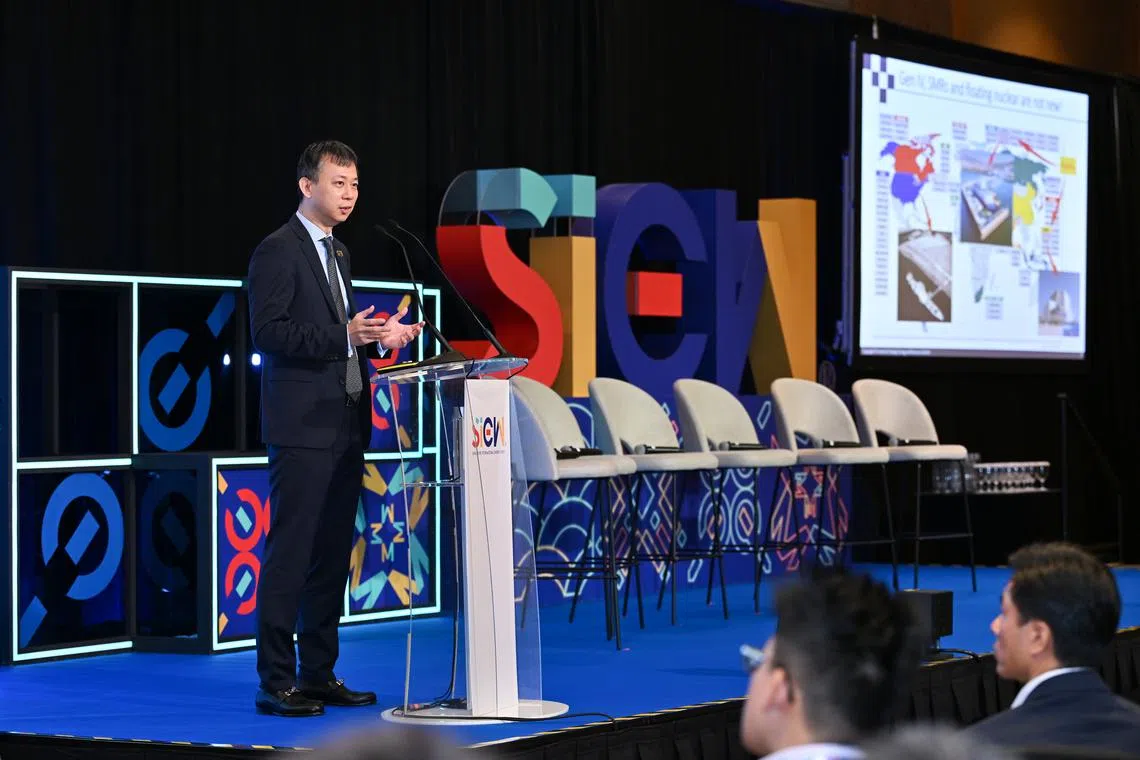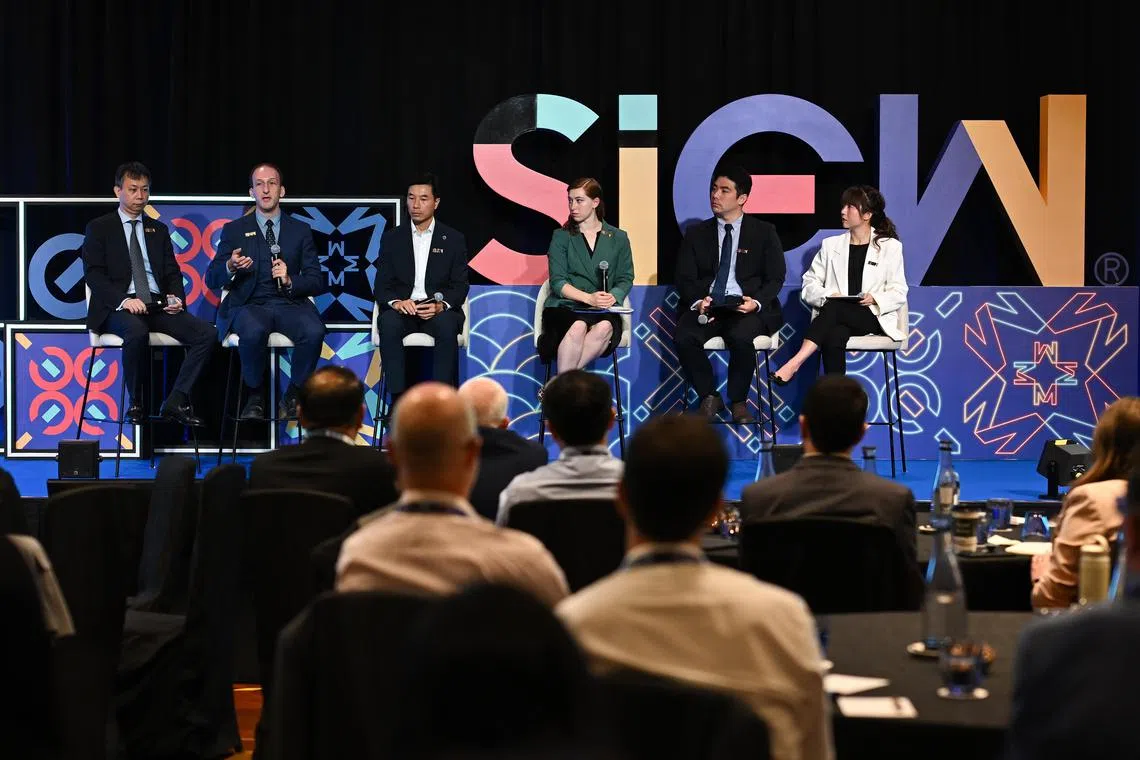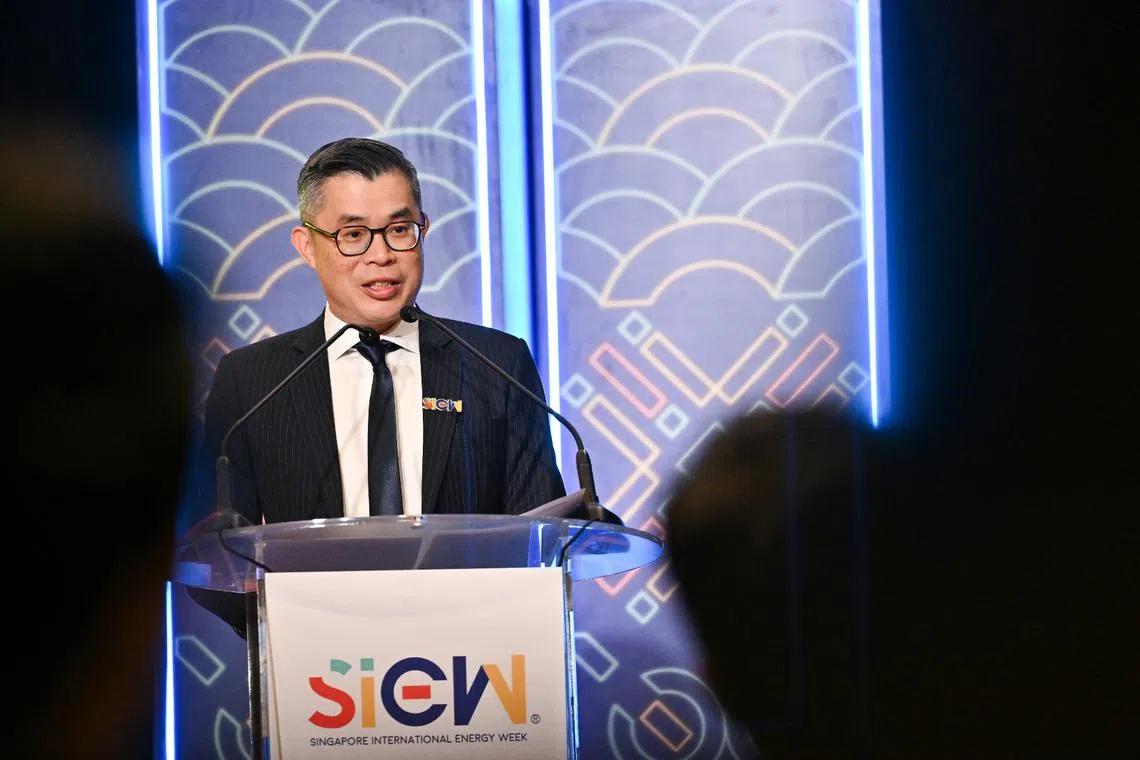Nuclear energy could contribute to Asean regional grid: Roundtable panellist
Sign up now: Get ST's newsletters delivered to your inbox

Dr Victor Nian, the founding co-chair of the Centre for Strategic Energy and Resources, said the Asean grid would ideally allow countries in the region to benefit from sharing renewable energy.
ST PHOTO: LIM YAOHUI
Follow topic:
SINGAPORE - Nuclear energy, being a stable source of power, could potentially replace the use of fossil fuels like coal in South-east Asia’s regional power grid, while providing electricity to off-grid communities.
Dr Victor Nian, the founding co-chair of independent think-tank Centre for Strategic Energy and Resources, said on Oct 24 that the Asean grid would ideally allow countries in the region to benefit from sharing renewable energy. He was speaking at a roundtable on nuclear energy during the Singapore International Energy Week, being held at the Sands Expo and Convention Centre until Oct 25.
But a major challenge to this stems from the intermittency of renewables, when electricity cannot be generated when the air is still and the sun does not shine.
Nuclear energy, which is generated by reactions that do not produce planet-warming emissions, could play a role in ensuring that countries have sufficient green electricity to share with one another, and for the electricity to be controllable, efficient, cost-effective and, most importantly, dispatchable, said Dr Nian.
The Asean region is currently a net exporter of coal, he noted. But as it moves away from the pollutive fossil fuel, it would need other generation sources, whether it is importing natural gas or increasing deployment of renewables.
But nuclear power, too, which “checks all the boxes” by being a low-carbon option that contributes a stable supply of energy, could also come into the picture by supplying an immense amount of power for the Asean power grid, he noted.
Moreover, small modular reactors (SMRs), which are an emerging nuclear technology with a smaller footprint compared with conventional plants, could also be deployed in space-constrained areas like in Singapore, and also help to power remote offshore islands, he added.
There were two panel discussions during the three-hour roundtable event, with the first focusing on the role of nuclear energy in the battle against climate change, and the other on how to boost public confidence in nuclear technologies.
Other experts on the first panel included Dr Michael Short, from the Massachusetts Institute of Technology’s department of nuclear science and engineering, and Mr Thomas Lui, the associate director for decarbonisation architecture at electricity company CLP Power Hong Kong.
Ms Celeste Marshall, an international relations specialist at the United States Department of Energy’s Office of Asian Affairs, and Mr Lee Jin Young, a senior researcher at construction firm Hyundai Engineering and Construction, rounded up the panel of five.
During the hour-long panel discussion, the experts also discussed Asia’s growing appetite for nuclear energy, with Hyundai’s Mr Lee expecting the share of nuclear power in Asia to go up to 10 per cent by 2050, should SMRs be commercialised and rolled out, especially in South-east Asia. This proportion would be an increase from 5 per cent in the Asia-Pacific region in 2021.
Mr Lee said that he expects nuclear energy to make up about 8 per cent of the region’s mix by 2050 if only large-scale nuclear plants are considered.
MIT’s Dr Short agreed, saying that he expects the pace of nuclear deployment to pick up in Asean. But he added: “Given the interconnectivity of the (Asean) region… a lot of political cooperation is going to be needed in order to see this through.”
The panellists noted that to realise nuclear’s potential in the region, several key policy shifts will be needed, from developing the frameworks to regulate nuclear power plants, to greater collaboration within the region on issues such as nuclear waste.
For South-east Asia, Dr Nian said that it is likely to be a “long term kind of journey”, of learning from the best – the best practices, what other countries are doing, the lessons learnt from accidents, and success stories.
“And then we need to think about what needs to be done… It needs to be a regional approach,” he added. For example, regional discussions could range from managing nuclear accidents to benefit-sharing, but collaboration will be key in allowing the nuclear energy to be shared among communities.

The panellists, (from left) Dr Victor Nian, Dr Michael Short, Mr Thomas Lui, Ms Celeste Marshall and Mr Lee Jin Young, with the moderator, ST assistant news editor Audrey Tan.
ST PHOTO: LIM YAOHUI
On international collaboration, Ms Marshall pointed to how the US has signed agreements with a number of countries in South-east Asia, including Singapore.
The 123 Agreement,
Mr Lui said: “Government funding in the initial stage is very important in developing these kinds of technologies, but even if you have very promising nuclear technology, you still need some major power company who is willing to undertake the demonstration process.”
The issue of communication and how to improve trust and confidence in nuclear technology was also a recurring theme at the roundtable.
Panellists on the second panel discussed ways in which the public’s concerns about nuclear safety can be addressed, by facilitating discussions to educate people on nuclear safety measures, correcting misinformation, emphasising not just the risks but also the benefits of nuclear energy, and training scientists to be able to explain technicalities to a lay audience.
The other speakers were: Dr Jean-Christophe Niel, director-general of the Institute for Radiation Protection and Nuclear Safety; Mr Beni Suryadi, acting executive director at the Asean Centre for Energy, Dr Chung Keng Yeow, director of the Singapore Nuclear Research and Safety Initiative; Mr Bob Soelaiman Effendi, chief operating officer at Thorcon Power Indonesia; and Dr Jonathan Cobb, senior programme lead for climate at the World Nuclear Association.
The Straits Times editor Jaime Ho, who gave the opening remarks ahead of the roundtable discussions, said that media outlets can play a role in shaping public discourse on issues relating to the climate crisis, particularly nuclear power.

ST editor Jaime Ho delivering the opening remarks on Oct 24.
ST PHOTO: LIM YAOHUI
He cited ST’s recently published nuclear feature, which involved the investment of “significant resources”, to demystify the technical aspects of nuclear energy.
“These resources have been crafted to make the conversation around nuclear energy more inclusive, allowing more people to engage with the facts, the potential benefits, and the inherent risks,” said Mr Ho.


